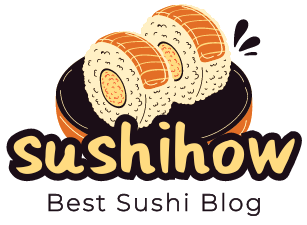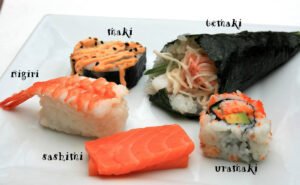Regional dishes reflect traditional ingredients and local customs in Japan’s rich culinary culture, providing a great opportunity to experience its diverse culinary heritage.
Regional sushi varieties are deliciously distinctive and distinctively Japanese. From Nigiri- and Kaisendon varieties, to name just two, each variety will give you a deeper appreciation for Japan’s culinary art.
Kanazawa
Kanazawa, known for its traditional gardens and culture (including an intact geisha district) offers delicious fresh seafood from the Sea of Japan. While snow crab is its signature delicacy, you shouldn’t overlook other delectables such as amaebi (sweet shrimp). Fishing season for amaebi runs between May to June and September to October; try it raw as sashimi or deep-fried with other local favorites such as gori karaage; this local specialty marries sweetness of sweet shrimp with crunchiness from fish fillets to combine sweetness of shrimp with crunchiness of fish!
Shun no Dining Juni Tsuki, located near Kanazawa Station, provides an exquisite menu of seasonal seafood including locally-sourced offerings like duck meat stew with its thick umami-rich sauce and melt-in-your-mouth texture, while their rockfish grill showcases some of Kanazawa’s thick and plump catches.
Join this izakaya for an engaging hands-on seafood experience, while dressing in custom-made food artisan costumes designed especially for this purpose. Working from ingredients available at Omicho Market’s finest produce stalls, you will create five pieces of Nigiri Sushi using guidance and finish your meal off with sake at the end. Especially memorable will be making and tasting Kaburazushi which features salted yellowtail and turnips sandwiched together with malted rice before being finished off by adding sake and gold leaf from Kanazawa; its flavors make for an unforgettable culinary adventure!
Kyushu
Kyushu is an exquisite Japanese region offering unique variations on one of the nation’s iconic foods: sushi. Kyushu sushi restaurants showcase Japan’s bounty of fresh seafood found there and offer an abundance of different varieties that reflect this province’s rich history and culture.
Early forms of sushi were originally used to preserve fish. Between the 14th and 16th centuries, rice vinegar was introduced into the dish to enhance fermentation processes that preserved fish longer. Furthermore, rice enabled easy finger food consumption as an introduction for makizushi rolls.
Nigiri sushi is a hand-formed type of sushi which includes slices of fish or shellfish atop cooked sushi rice known as “shari”. Nigiri sushi can be made using various seafood such as tuna, shrimp, squid, octopus and sea urchin; often times served on special occasions and celebrations in Japan.
Gunkanzushi sushi is another hand-formed variant that features tuna, shrimp or squid as its filling, wrapped with nori (dark green sheet of seaweed originally harvested from dock pilings and rolled into thin sheets before commercial sale).
Chirashizushi (literally “scattered sushi”) is another Kyushu classic that can be found throughout Japan. This dish consists of a bowl of sushi rice topped with an assortment of seafood such as salmon, squid, cucumbers, boiled prawns and shredded omelet; commonly included in bento boxes or served at celebratory meals along with refreshing glasses of sake or hot green tea for an enjoyable dining experience.
Hiroshima
Many people who think of sushi envision delicate maki-zushi filled with avocado and salmon, or perfectly proportioned tuna nigiri pieces. Although such dishes can be found across Japan, their variety reflects regional influences, chefs’ creativity and changing culinary trends.
Chirashizushi is an elegant variety of sushi cuisine, consisting of a bowl of sushi rice “scattered” with ingredients and topped with raw fish or vegetables. It is typically enjoyed during lunch or special events like Hinamatsuri (girl’s day) and Kodomonohi (boy’s day).
Hiroshima residents love Koiwashi as an addition to their meals. This fish, native to Seto Inland Sea and known for its intense flavor, pairs beautifully with any variety of ingredients for an unforgettable bite!
Other distinctive sushi preparations include sasazushi, which consists of rice wrapped with toppings in bamboo leaves. It is popular among children and often eaten on special occasions like the Uesugi Warlord Celebration.
Hiroshima is famous for both sushi and okonomiyaki; both delicious dishes combine batter, cabbage and various seafood or meat such as squid or oysters in an irresistibly tasty fashion. Both options may also feature garnishes such as bonito flakes, green laver or cheese for an irresistibly delightful finish!
Shikoku
Shikoku may be Japan’s smallest main island by area, yet it packs a powerful natural and culinary punch. Bordered by both the Seto Inland Sea and Pacific Ocean, Tokushima, Kagawa, Ehime and Kochi boast seafood bounty from their abundant waters, high-grade rice from fertile plains, fruits and nuts grown abundantly across their valleys, unique local traditions that differ according to each prefecture and an impressive history dating back centuries.
Your dining options at these regional establishments include traditional sashimi to modern rolls and bowls – from classic sashimi to sophisticated rolls and bowls. Sashimi is perhaps the ultimate sushi dish, featuring skillful slicing of fresh fish to showcase its inherent flavors; Nigirizushi or hand molded mounds of sushi rice covered with neta draped over them are another well-known style; futomaki/makizushi involves rolling ingredients together on bamboo mats before being placed onto bamboo mats; similarly chirashi serves similar ingredients in bowls to create what appears as deconstructed sushi rolls!
Not to be missed is narezushi, an ancient form of Japanese sushi dating back to when rice cultivation first started in Japan. The original form consisted of fermented fish mixed with fermented rice (instead of today’s more common grilled or pickled versions) for maximum salty and umami content. This makes this sushi very salty while remaining delicate on texture.



